Realizing Fast "Full Blood Resurrection" Talking about Fast Charging Technology of Mobile Phone
2015 is the first year of fast charging popularization, and you may have catchy words about OPPO’s "charging for five minutes and talking for two hours". Many manufacturers have also added fast charging technology to their main models. The reason why fast charging technology has been fully popularized is related to the active promotion of mobile chip manufacturers. On the other hand, mobile phones have more and more functions and screens, and the demand for battery life and charging time is increasingly prominent. In addition, under the actual situation that the battery technology has not changed much, fast charging has become a "good prescription" for the curve savior.
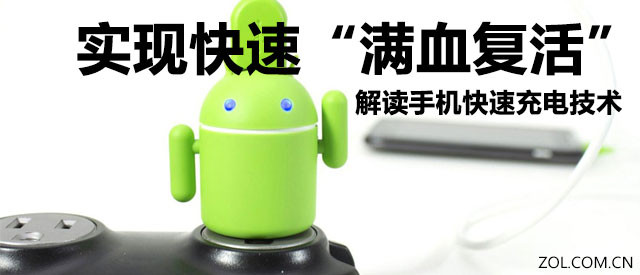
At present, the mainstream mobile phone fast charging technology mainly has the following four kinds:Qualcomm Quick Charge 2.0 technology、MediaTek Pump Express Plus technology、Dezhou instrumentMax Charge fast charging technologyandOPPO VOOC technology.Quick Charge 2.0 is the most common, focusing on flagship mobile phone products.
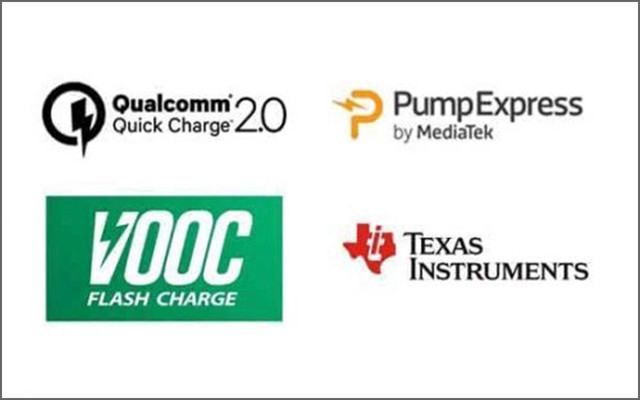
Mainstream fast charging technology actively promoted by manufacturers
After mobile phone manufacturers get these different fast charging technologies, it seems that they are not "exclusive" enough, so they will all change their names, and a PPT page will be reserved for the non-fast charging technology at the press conference. For example, new terms such as BoostMaster technology named by ASUS, flash charging technology named by OPPO R7s, mCharge 2.0 named by XL, fast charging by USB 3.1 named by XL, Turbo Charger named by XL, etc., but in fact, they are similar from the technical source.
Let’s not discuss these seemingly unforgettable naming methods for the time being. What is the principle of fast charging technology of mobile phones? How to realize fast charging? What fast charging technologies will be expected in the future? These are the focus of this article.
● Principle of fast charging technology?
Returning to a physical formula taught by a PE teacher,P "electric power" = u "voltage" xI "current". At present, there are two methods to improve the charging power, either increasing the voltage or the current, or both the voltage and the current. And only certified terminals and adapters can achieve efficient charging effect.
First, the charger steps down the household electricity from 220V to 5V and outputs it to the Micro USB interface of the mobile phone, and then the internal circuit of the mobile phone steps down to about 4.3V to charge the battery. There are two processes to reduce blood pressure.

Demonstration principle of mobile phone charging

Summary of fast charging technology
◆ Qualcomm: Quick Charge 2.0
Qualcomm Quick Charge 2.0 is a comprehensive battery management technology, which can increase the charging speed by increasing the current and voltage. It supports 5V, 9V and 12V, and the maximum charging current can reach 3A. With the Micro USB connector, Qualcomm Quick Charge 2.0 Class A can provide up to 24W of power, and with the Type-C connector, it can provide 36W of power. According to the laboratory data of Qualcomm, Quick Charge 2.0 can fully charge a 3300mAh battery in 96 minutes.

Qualcomm Quick Charge 2.0 charges for 30 minutes, and the battery capacity of the mobile phone can reach 50%.
◆MTK’s Pump Express fast charging technology.
MTK’s Pump Express fast charging technology can be divided into two types, one with Plus and the other without Plus. The one with Plus can provide 24W(12V) or even higher output power, while the one without Plus can provide 10W(5V) output power.

Fully charge a 2060mAh battery with 75% charge within 30 minutes.
Pump Express Plus is a proprietary fast charging technology in MediaTek, which supports high-power chargers with an output of more than 15W, and can shorten the typical charging time of mobile devices by up to 50%. The fast charging technology of Pump Express Plus supports three charging voltages: 5V, 7V and 9V, and the charging current is 1.67A. Theoretically, the fast charging technology of Pump Express Plus can fully charge a 2060mAh battery with 75% power in 30 minutes.
◆TI MaxCharge
The fast charging technology of TI MaxCharge integrates the charger circuit of 5A single lithium ion battery, and supports the input voltage up to 14V when the current reaches 5A. The 9V and 12V voltages of Quick Charge 2.0 in Qualcomm, backwards compatibility, also support 7V, 9V and 12V of Pump Express Plus in MediaTek. Compared with the existing battery charger, this device will reduce the charging time by more than half, and the charging time can be reduced by up to 60%.

TI MaxCharge fast charging technology
◆OPPO VOOC
OPPO VOOC is a low-voltage and high-current charging technology. Compared with the traditional charging speed, it is four times faster. MCU single-chip microcomputer is integrated in the charger and battery circuit to replace the step-down circuit, and the MCU single-chip microcomputer can automatically detect whether the charging equipment supports fast charging. It can charge 75% of the 3000mAh battery in 30 minutes. At present, only OPPO’s own products can use this technology.

Comparison between OPPO VOOC flash charging interface and ordinary data line
In fact, OPPO VOOC flash charging technology adopts low voltage and high current mode, which can ensure the charging speed and reduce the heating of adapter and mobile phone when charging. However, the compatibility of this technology is relatively narrow, and only Find 7 can match it. And later, due to the "slimming" of the charger, the adapter parameter was changed to 5V 4A, which is less obvious than the adapter that can reach 24W in the market.
As for which fast charging technology everyone cares about? There is not much discussion here. However, from the point of familiarity, QC2.0 has a wider coverage, especially the adoption of flagship models of domestic mobile phones is more common. In addition, when you buy a mobile phone, you don’t take whether you have the fast charging technology as the decision criterion. This is a colorful function, and the fast charging technology is constantly developing.
Reference article: which strong MotoXStyle/OPPOR7s is fast charging?
6s can only see the Samsung S6 edge+ wireless fast charging experience.
Fast charge curve saves the country and Quick Charge enters the 3.0 era.
● Fast charging mythbusters.
◆Question 1: Will fast charging affect the battery life?
Due to the heat problem caused by high voltage switching, some mobile phone brands have been castrated by manufacturers although their processors support fast charging technology, largely considering the heat problem of the whole machine. So does fast charging affect battery life? According to a survey, the respondents who think that fast charging will shorten the service life of batteries are the most, accounting for 70.5%.
In principle, the damage of the battery basically comes from two aspects: on the one hand, when the battery is charged and discharged, the cathode and anode of the battery will shrink and expand with the release and absorption of ions, and the chemical substances on the battery will be destroyed after long-term fast charging, which will shorten the battery life. On the other hand, during fast charging, due to the high current, the thermal effect of the current will be intensified, which will lead to the high temperature of the battery, which will also cause the capacity to drop sharply and the battery cell to be permanently damaged.
Personally speaking, once the current value set by the mobile phone manufacturer is exceeded, the service life of the battery will be reduced. Both normal charging and fast charging will have an impact. After all, the heat generated during fast charging is obvious, and fast charging will be slightly stronger than normal charging, but the impact of such batteries is within a safe and reasonable range.
◆Question 2: Is Type C charging fast or not?
Type-C interface has become a selling point of differentiation of mobile phone manufacturers last year. Since LeTV One, LeTV One Pro and LeTV Max, many new domestic machines have used Type-C interface. Including one plus two, Google Nexus 6P, Microsoft and Lumia 950 XL are all following up.

Nexus 6P adopts 5V 3A charging specification.
However, you will find that the charging speed of Type-C is not fast, except that the output power is as high as 24W. Many new machines with type-C interface only support ordinary 5V 2A charging, and slightly better 5V2.5A. Although Xiaomi’s first 4C mobile phone with Type-C interface has QC2.0 blessing, the measured input power is about 10W.. Google Nexus 6P uses the charging specification of 5V 3A, which is faster than the input power of QC 2.018W..
Question 3: Can the fast-charging cable be used casually?
In order to realize fast charging, in addition to the specifications of the charging transformer, it is necessary to support large current and voltage output, and the wires used are not ordinary cheap wires, which can be used for large current and voltage output. Goole engineers have previously warned that many USB-Type C wires are not up to standard, which may easily cause equipment damage.

Fast charging cable has to pass customs clearance.
Thus, to support fast charging of mobile devices, not only the processor supports this technology, but also many protective measures and peripheral device upgrades, which will increase many costs and security risks. It is recommended that users can use the original adapter and power cord, which is the best choice.
● The future development of fast charging?
◆QC3.0 fast charging technology
QC3.0 fast charging technology has undoubtedly become a hot spot recently, which can be used together with the latest Snapdragon 820, 620, 618, 617, 430 and other specific Qualcomm Snapdragon processors. butThe fast charging protocol of QC 3.0 allows the charger to increase the step voltage by 200mV instead of 5/9/12V of QC 2.0.. Compared with QC2.0, it improves efficiency and reduces fever. It is expected that many new machines will be equipped with this technology in 2016. It has been confirmed that Xiaomi will soon release the fast charging technology supporting QC3.0 after the Spring Festival.
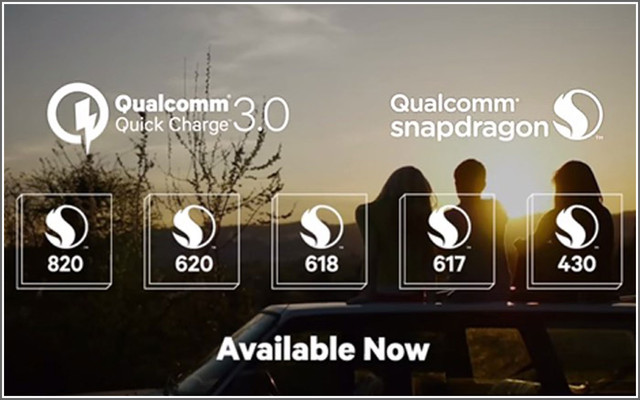
The latest Qualcomm processors support Quick Charge 3.0.
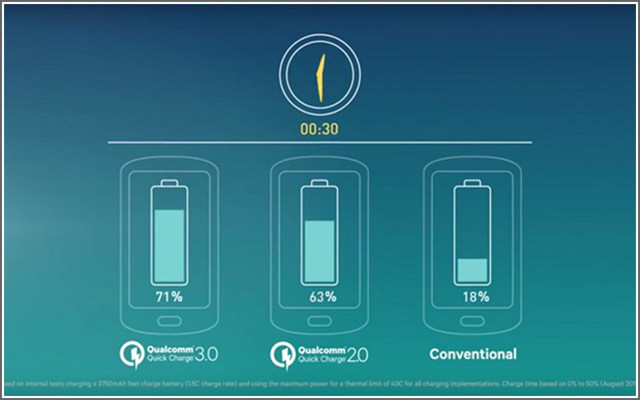
QC3.0 fast charging will become a popular technology in 2016.
It can be predicted that this year, Qualcomm Xiaolong 820 processor is still favored by many flagship products of mobile phones, and the number of new products exposed at present is not too large. In the future, you will definitely see more mobile phones supporting Quick Charge 3.0. Compared with the previous fast charging technology, the charging speed of this technology is faster. It only takes 35 minutes to charge from 0 to 80%, which is twice as fast as the first generation QC fast charging technology. Qualcomm’s technical advantages in the field of fast charging will be further amplified.
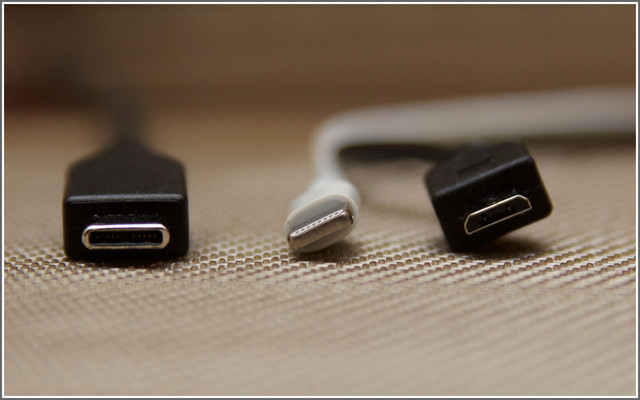
USB3.1Type-C interfaceThe future is optimistic
◆Type-C USB3.1 is optimistic in the future.
Type-C is the interface type and USB3.1 is the technical standard. Under the USB 3.1 standard, Type-C also supports USB PD(USB Power Delivery), which has improved the power supply capacity compared with the past. The maximum allowable standard introduced by USB-IF(USB Implementers Forum) has been raised to 20V/5A, totaling 100W, which is quite obvious compared with the current mainstream 10W. According to the available power, USB PD has set five specifications of 10W, 18W, 36W, 60W and 100W. At the same time, users can also enjoy the convenience of forward and backward insertion brought by USB type-C.
Summary:
Fast charging technology is still a selling point that can’t be ignored in the 2016 mobile phone manufacturer conference. Qualcomm’s flagship mobile phone products will support QC3.0 fast charging technology one after another. Of course, the Type C interface under the USB 3.1 standard is also expected. In fact, in recent years, we can see that there is not much breakthrough in battery technology, but with the rapid charging technology gradually maturing, the method of "quick blood return" can indirectly make up for the continuous demand for battery capacity.






